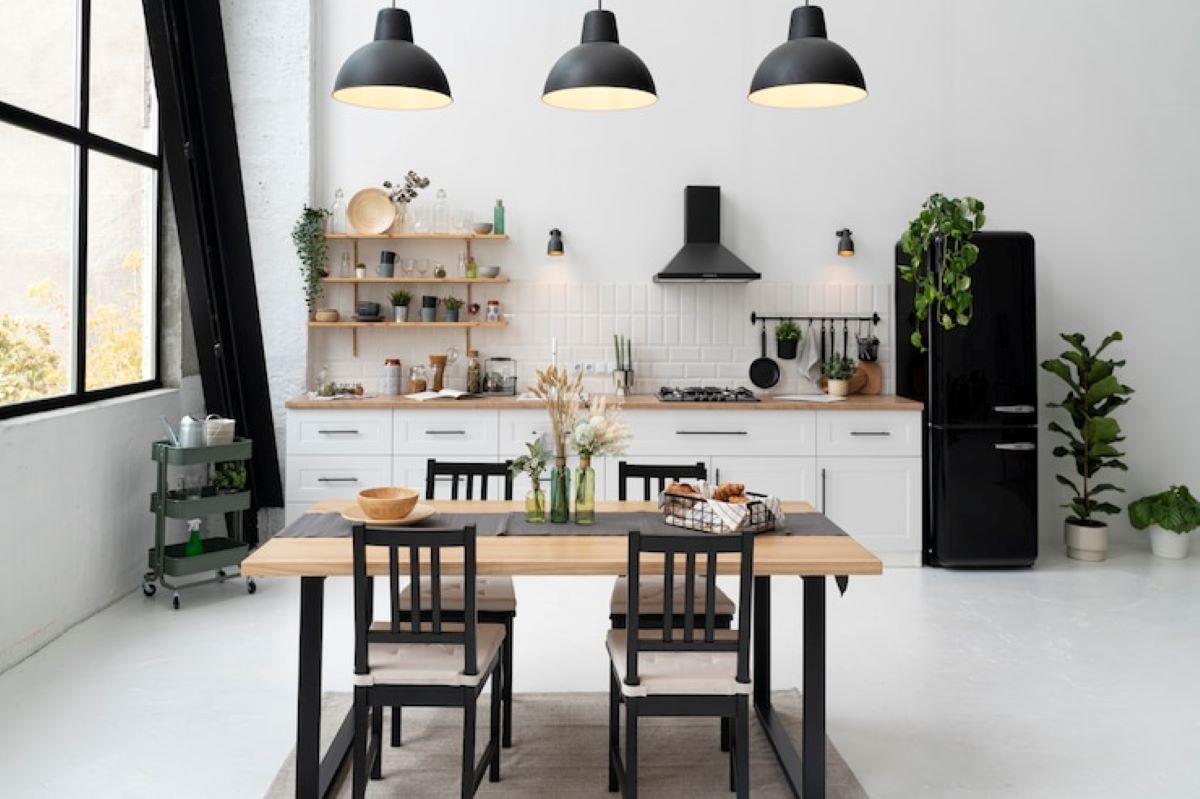
The kitchen is mostly a functional place for cooking and storing food at home. Furthermore, at home, the kitchen is the main place where you can judge the resident people’s personalities and eating habits. Moreover, designing a kitchen garden is an artful use to enhance the functionality of the kitchen. A home needs a kitchen garden that gives natural beauty to the home. In addition, designing a kitchen garden is an opportunity to create a strong connection with nature at home that builds up the overall beauty of your home’s interior. Additionally, green plants and flowers provide an abundance in a home kitchen. However, kitchen gardens and indoor plants play a very outstanding role in enhancing the beauty of your kitchen and launch. Moreover, indoor greenery provides a happy and healthy indoor environment.
Designing Tips For Kitchen Garden
- Location Selection
- Plant Selection And Proper Spacing
- Vertical Gardening
- Theme Gardens
- Lighting in Garden
- Pest and Disease Management
Location Selection
Designing a kitchen garden according to the direction and space availability. Furthermore, in the kitchen mostly prefer to utilize the corners. Moreover, select a sunny space in the kitchen for the growth and healthy plants. Therefore, plants need at least 6 hours of sunlight for optimal plant growth. However, the location of greenery in the kitchen plays a very important role in enhancing the beauty of the kitchen and indoors.
Plant Selection And Proper Spacing
Initially, in designing the home kitchen garden, plant selection according to the session and trend is important. Moreover, proper spacing between the plants also plays a very important role in enhancing the beauty of the kitchen. Furthermore, Choose the plants that are used to filter your climate and are suitable for your daily needs in the kitchen. Therefore, ensure proper spacing between plants for healthy growth, airflow, and access to sunlight for healthy growth of plants.
Vertical Gardening
Vertical gardening is an innovative approach with limited space in the kitchen for the home kitchen garden. Additionally, vertical gardening utilizes walls, trellises, grill frameworks, and hangings for plants to hang on. Moreover, this equipment uses minimum space in the kitchen. Additionally, a vertical garden in the kitchen offers easy access for tending and harvesting plants while adding creative interest to the kitchen garden.
Theme Gardens
Designing a garden in the kitchen just like a theme through proper maintenance and good management of plants. Moreover, in the theme garden add an herb garden, salsa garden, or pizza garden to fulfill the daily use. Furthermore, theme gardens can transform kitchen garden spaces into delightful and purposeful through natural color schemes of plants, growth of plants, and arrangement of kitchen plants.
Lighting In Garden
Establish indoor or focused lighting on the kitchen garden plants to expand usability and visibility into the evening hours. Moreover, LED lights or solar-powered lights an eco-friendly lighting and they highlight focal points and enhance the garden’s overall beauty. However, considering such factors in designing kitchen garden lighting are the direction of the garden and the types of plants. Moreover, the desired atmosphere of plants creates a welcoming and enchanting indoor space for day and night views.
Pest And Disease Management
Pest and disease management is important for maintaining healthy home kitchen plants. In addition, regular or planned inspection of plants helps to detect early signs of infection. Moreover, maintaining soil, crop rotation, and using fertilizers for healthy plants and can reduce the risk of pests and diseases in kitchen garden plants. Nevertheless, natural products like neem oil and garlic spray are effective alternatives to chemical pesticides for the protection of pests and plant diseases.
Final Thoughts
In conclusion, designing a kitchen garden is not only about adding greenery to your home but also about creating a space that enhances your cooking experience. Moreover, by selecting the direction, and plant type, and creating a theme garden for your kitchen garden. Therefore, you can transform your space into attractive and create a natural environment in your home. However, proper spacing between plants and managing the kitchen garden using chemicals and fertilizers for maintaining a healthy kitchen garden. Furthermore, regular inspections and use natural remedies to keep your plants from insects and any seasonal disease. Consequently, a well-designed kitchen garden enhances the beauty of your home space but also promotes sustainability and the natural environment. On the other hand, the natural beauty of the kitchen garden is a source of joy, inspiration, and nourishment.
Frequently Asked Questions (Faq’s)
Q1. Do I need a lot of space to create a kitchen garden?
Ans. For the kitchen garden, you do not need any space limitations you can use your space availability. In addition, small kitchens have limited space for cooking in this you can use vertical gardening techniques to utilize corners. Moreover, hanging frames for planting and horizontal gardening techniques utilize the walls of the kitchen.
Q2. How do I choose the right plants for my kitchen garden?
Ans. In the kitchen garden use plants that you can frequently use in your cooking. Furthermore, herbal plants like basil, parsley, and rosemary, and other vegetables like cherry tomatoes, and peppers that are used frequently in cooking. Moreover, you can choose seasonal vegetable sand flowers to enhance the beauty of your kitchen space and also increase the attractiveness of your kitchen garden.
Q3. How much sunlight and water does a kitchen garden need?
Ans. Different temperatures and water quantities are needed when vegetables or other plants germinate. Furthermore, most kitchen garden plants require at least 5 to 6 hours of sunlight per day, to maintain the health of plants. Therefore, choose a location in the kitchen that receives sufficient sunlight for completing the food-making process of plants. However, you can understand the water demand of plants through the soil of the garden, Indoor plants typically require nutrient-rich soil.






